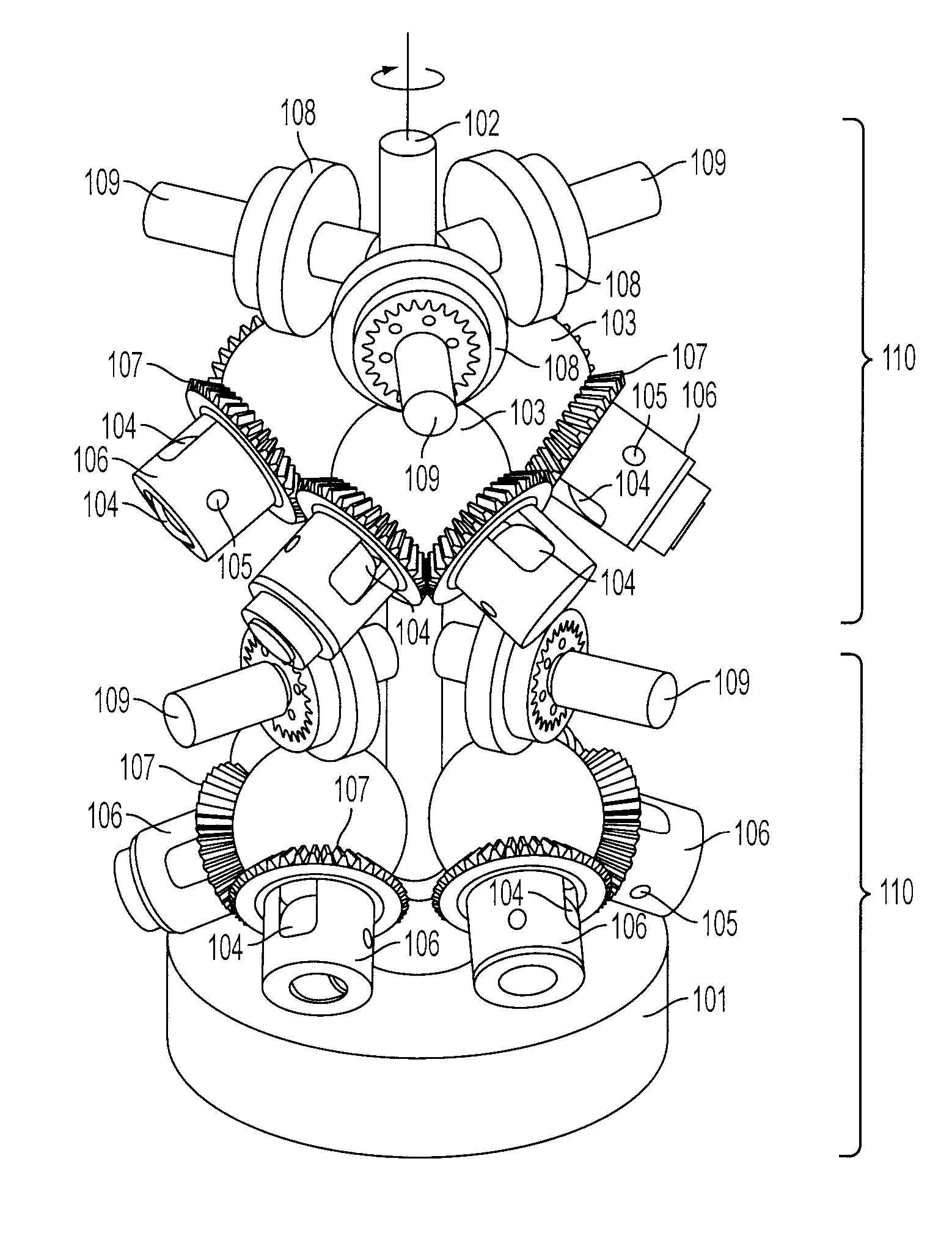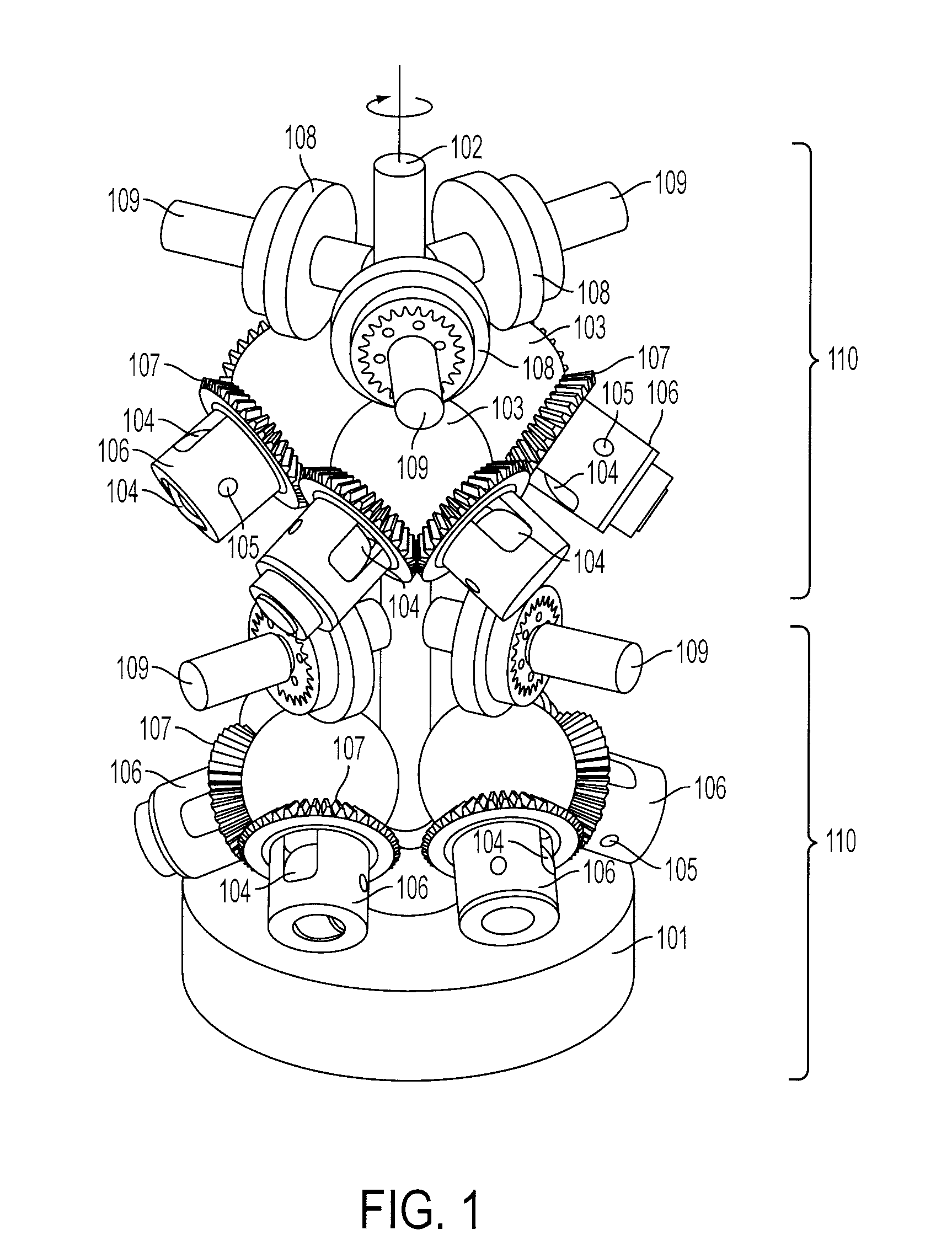Continuously Variable Transmission with Mutliple Outputs
- Summary
- Abstract
- Description
- Claims
- Application Information
AI Technical Summary
Benefits of technology
Problems solved by technology
Method used
Image
Examples
Embodiment Construction
[0013] In the example illustrated in the accompanying figures, and described in detail below, a plurality of continuously variable transmission units (CVTs) are arrayed circumferentially around a common rotating shaft. The shaft is connected to a source of input rotational motion, for example an electric motor. Additional arrays can be distributed along the length of the common shaft. Each CVT enables rapid, accurate and independent adjustment of the transmission ratio of each output by means of a computer. The transmission thus easily permits relating output speeds one to another under computer control, making possible the establishment of virtual surfaces and other haptic effects in a multidimensional workspace to which the transmission outputs are kinematically linked. An example of such a workspace is that of a robotic or prosthetic hand. With continuously variable ratios, each CVT further enables extending the range of capabilities of the input motor beyond the range of speed a...
PUM
 Login to View More
Login to View More Abstract
Description
Claims
Application Information
 Login to View More
Login to View More - R&D
- Intellectual Property
- Life Sciences
- Materials
- Tech Scout
- Unparalleled Data Quality
- Higher Quality Content
- 60% Fewer Hallucinations
Browse by: Latest US Patents, China's latest patents, Technical Efficacy Thesaurus, Application Domain, Technology Topic, Popular Technical Reports.
© 2025 PatSnap. All rights reserved.Legal|Privacy policy|Modern Slavery Act Transparency Statement|Sitemap|About US| Contact US: help@patsnap.com



